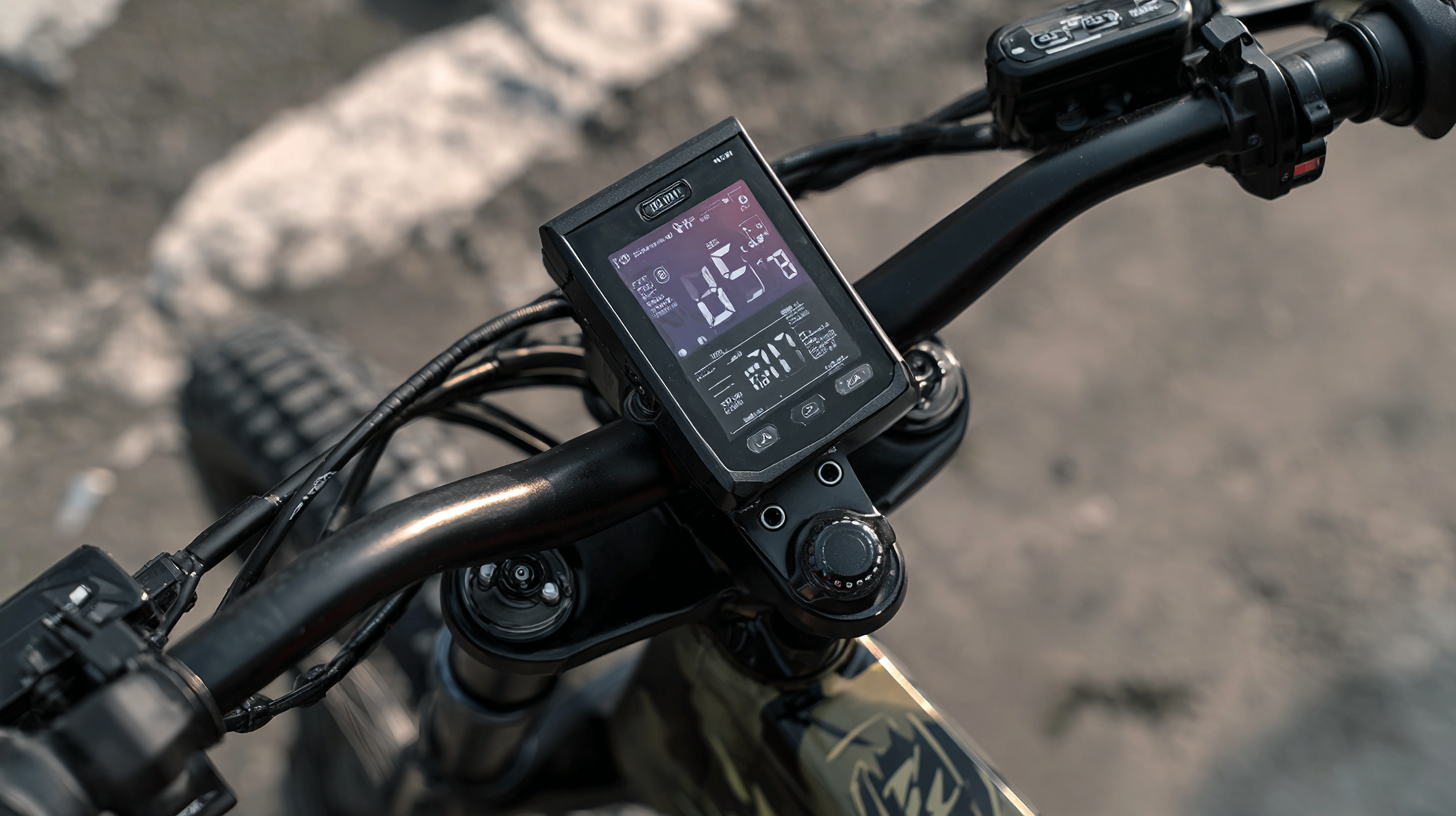In recent years, the popularity of electric bikes has surged, driven by a growing awareness of eco-friendly transportation and the convenience they offer. According to a report by the Research Institute for Electric Mobility, the global electric bike market is expected to reach $38 billion by 2025, with a compound annual growth rate (CAGR) of 8.5%. As this market expands, the significance of the Electric Bike Display in enhancing the riding experience has become increasingly apparent.
Expert in the field, Dr. Kevin L. Thompson, notes, "The Electric Bike Display is more than just a dashboard; it is the interface that connects riders with their bikes, providing real-time feedback on performance, battery life, and navigation." Such insights affirm the crucial role that these displays play in ensuring an enjoyable and efficient riding experience. This article will explore the top 10 Electric Bike Displays available on the market today, showcasing how they improve functionality and cater to the needs of modern cyclists.

When choosing an electric bike display, several key features can significantly enhance your riding experience. Brightness is essential; a display should be visible in various lighting conditions to ensure safety and usability. Studies, such as those conducted by the Electric Bicycle Association, indicate that up to 70% of e-bike users prefer displays that offer high visibility and contrast, especially during daytime rides. Another important feature is responsiveness. A display that updates in real-time provides critical information, such as speed, battery level, and distance traveled, allowing riders to make quick adjustments during their journey.
Tips: Always check for customizable display options, which let riders tailor the information to suit their needs. A well-designed interface enhances usability, as evidenced by a survey from eBike Marketplace showing that 65% of riders appreciate modular options. Additionally, consider connectivity features, such as Bluetooth and app integration, which can provide advanced metrics and even navigation support. These enhancements are not just luxurious; they improve overall safety and performance, making every ride a more enjoyable experience.

When it comes to electric bike displays, understanding the differences between LCD and OLED technology is crucial for maximizing visibility and improving the overall riding experience. LCD displays have been a staple in the cycling industry due to their lower cost and robust performance in various lighting conditions. According to a report by Grand View Research, the global demand for LCD screens in electric bikes is projected to grow at a rate of 6.8% from 2022 to 2030, highlighting their widespread popularity. However, LCDs can struggle in direct sunlight, often making it difficult for riders to read essential information such as speed and battery life.
On the other hand, OLED displays are rapidly gaining traction thanks to their superior contrast ratios and vibrant colors, which significantly enhance visibility in bright sunlight. Research by IDTechEx indicates that OLED technology is expected to make up 40% of the electric bike display market by 2025, as more manufacturers recognize the advantages of this technology. With their ability to produce deeper blacks and more vivid colors, OLED displays not only improve readability but also contribute to a more enjoyable riding experience, even under challenging lighting conditions. As the electric bike market continues to evolve, understanding these display types will be key for riders seeking to enhance their journeys.
Integrated GPS and navigation features in electric bike displays significantly enhance the riding experience by ensuring that cyclists can explore new routes with confidence. With real-time navigation updates and turn-by-turn directions, riders no longer have to stop and consult their phones or maps. This seamless integration of technology into the cycling experience allows for hands-free navigation, enabling cyclists to focus on the road ahead while still receiving essential guidance. Such features are particularly beneficial when venturing into unfamiliar territories where traditional navigation methods may fall short.
Moreover, advanced GPS capabilities also offer additional safety benefits. Many electric bike displays with navigation features allow riders to track their journeys, which can be useful in emergency situations. Additionally, some displays include route planning tools that can suggest multiple paths based on desired difficulty, terrain, or scenic beauty. This level of customization not only makes rides more enjoyable but also encourages exploration beyond the usual routes. As electric bikes become more popular, the integration of these smart features is transforming how cyclists experience their rides, bringing a new level of convenience and adventure to cycling.
Electric bike displays serve as the central interface for riders, providing essential metrics that enhance the overall riding experience. Key data points such as speed, distance, and battery life are crucial for understanding performance and ensuring a safe journey. Keeping track of speed helps riders maintain control and optimize their energy usage, while distance metrics allow for better trip planning and pacing. Moreover, battery life indicators are vital; they inform riders about the remaining power, assisting in avoiding unexpected failures on longer commutes.

The importance of these metrics cannot be understated. For instance, monitoring battery life empowers riders to adjust their routes or assistive power levels to ensure they can reach their destinations without running out of charge. As the electric bike market matures and more advanced displays emerge, riders can expect these systems to integrate seamlessly with smartphone apps and other digital tools. This convergence not only enhances the riding experience but also aligns with the broader shift towards smart, connected mobility solutions. The focus on user-friendly interfaces and critical metrics will be pivotal in attracting new riders to the electric bike community.
Modern electric bikes (e-bikes) are increasingly equipped with advanced displays that significantly enhance the riding experience, particularly through user-friendly interfaces. The rise of touchscreens in e-bike displays has transformed how cyclists interact with their bikes. According to a report by the Electric Bike Association, 65% of e-bike users prefer touchscreens over traditional buttons due to their intuitive navigation and ease of use. Touchscreens allow riders to access vital information—such as speed, battery life, and navigation—quickly and effortlessly, ensuring that they can focus more on the road.
Furthermore, the integration of touch-sensitive displays not only improves usability but also allows for greater customization. Features like personalized ride modes and fitness tracking are becoming standard, catering to the diverse needs of cyclists. A study by MarketsandMarkets projected the e-bike display market to grow at a CAGR of 9.14% from 2022 to 2027, emphasizing the increasing demand for enhanced user interfaces. As these technologies continue to evolve, riders can expect even more innovative features that further enrich their cycling experience, making e-bikes not just a means of transport but also a tool for connected and enjoyable riding.






